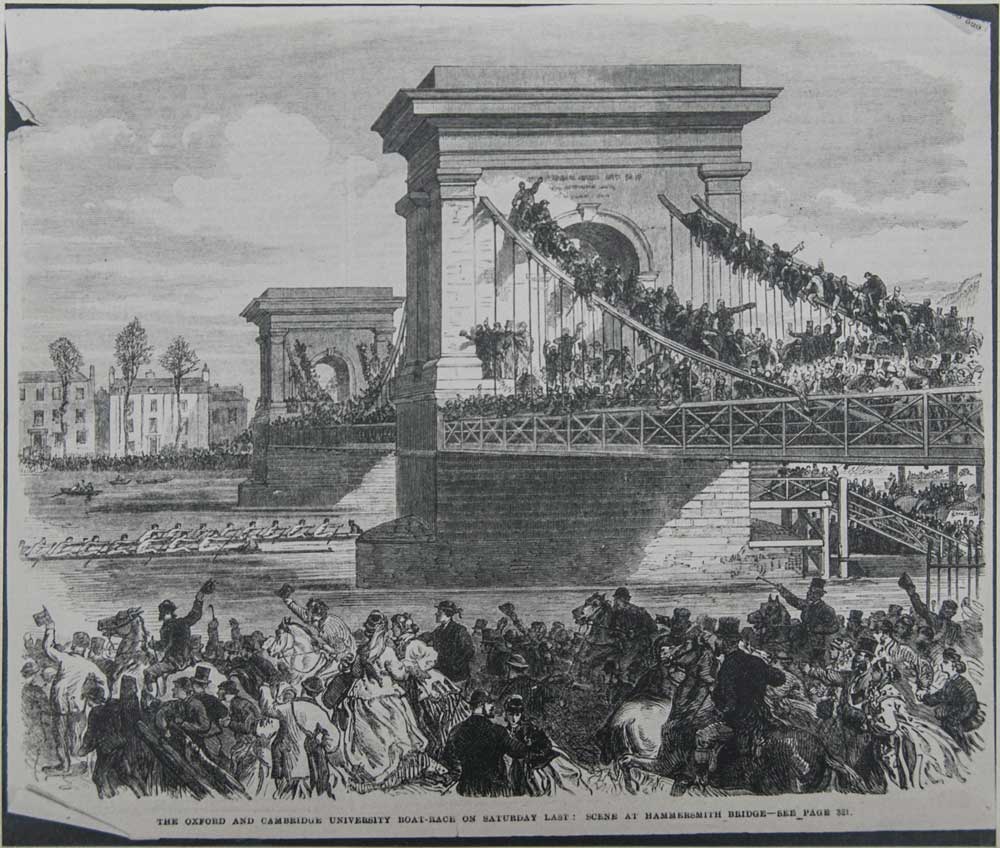The Boat Race, 1866
Hammersmith Bridge is one of the most elegant on the Thames. It has also had a rather chequered history…
The river crossing between Hammersmith and Barnes made history when, in October 1827, it became the site of one of the world’s earliest suspension bridges – and the first across the Thames.
Designed by local resident William Tierney Clark (there is a memorial to him in St Paul’s church), the bridge cost £80,000 to build. It was an impressive stone construction with two brick piers and two towers with arched entrances in the fashionable Tuscan style. Eight chains slung between the towers held the bridge in place and there were two octagonal toll houses at either end Clark’s bridge was held in great affection despite its rapidly evident unsuitability for the increasingly large volume of traffic using it. The low clearance level at high tide was lampooned in an 1842 edition of Punch: ‘A vessel passing under it is compelled to lower her chimney onto the heads, or into the laps, of the passengers, besides rendering it incumbent on all on board to bend to circumstances, by placing their heads between their knees, during the time occupied in passing under the elegant and commodious structure.’
In 1870 the bridge was barely able to sustain the pressure created by the presence of over 11,000 enthusiastic spectators who came to Hammersmith to watch the annual University Boat Race and, eventually, practicality prevailed. It was demolished and work started on a stronger construction designed by the renowned civil engineer, Sir Joseph Bazalgette.
The new bridge cost £82,117. It stood on the existing piers and incorporated a wrought-iron framework with ornamental cast-iron casings to give the impression of arches. It was formally opened by the then Prince of Wales in June 1887.
The architectural historian Nicholas Pevsner wasn’t impressed, describing the ‘atrocious, portly gilt pylons crowned by little Frenchy pavilion tops with elephantine ornaments on its approaches.’ The public, however, disagreed; the bridge soon became one of West London’s most distinctive landmarks, a popularity only enhanced by its stubborn survival of three terrorist attacks.
The IRA claimed responsiblity for all three. The first, in March 1939, could have caused extensive damage had it not been for a quick-witted Chiswick resident. Hairdresser Maurice Childs was walking home across the bridge in the early morning when he noticed smoke and sparks coming from a suitcase. Astonishingly, he opened it, saw a bomb and lobbed the bag into the Thames where it exploded, sending up a 60 ft column of water. Childs was awarded an MBE for his bravery.
Luck again played its part in 1996, when two Semtex devices failed to go off. The third attack, in June 2000, was more successful, but the blast actually resulted in little damage; in fact, it emphasised the need for urgent further strengthening to withstand the demands of modern traffic. When Sir Joseph Bazalgette’s elegant Grade II-listed bridge finally re-opened, it was with weight restrictions.
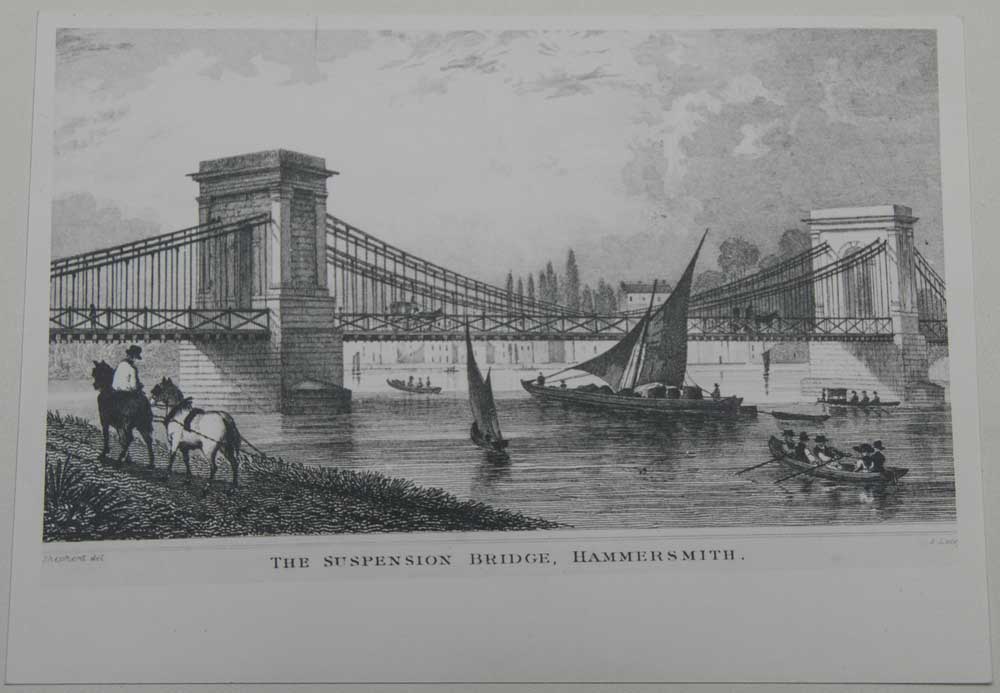
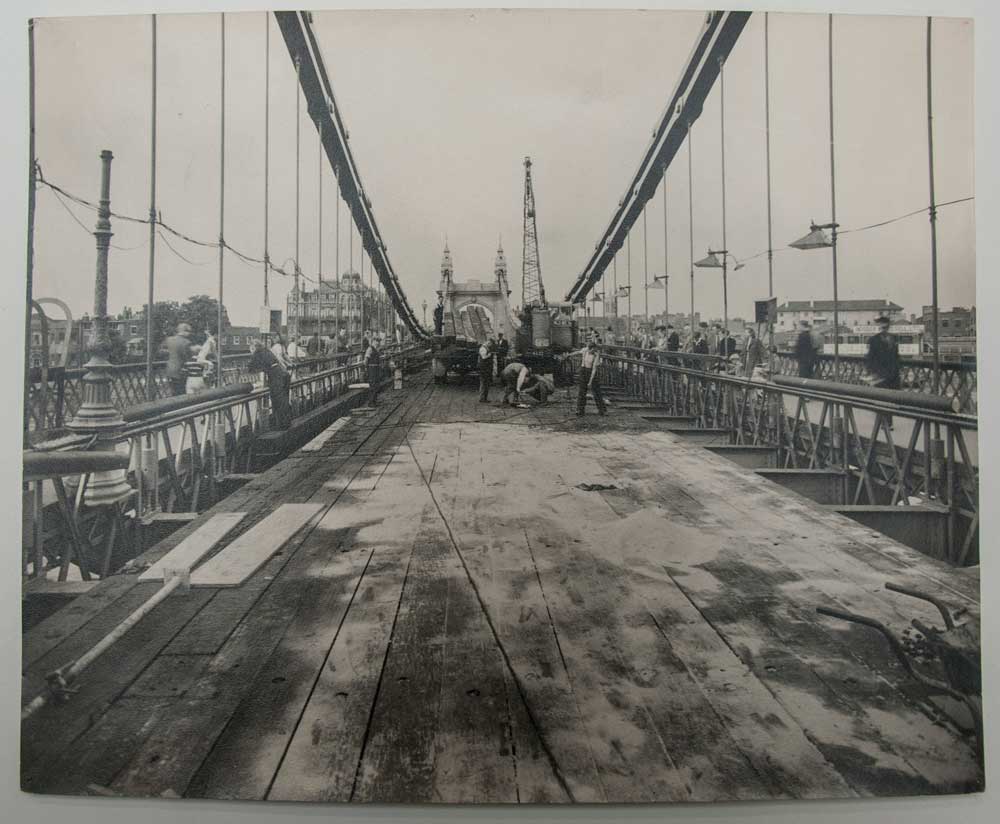
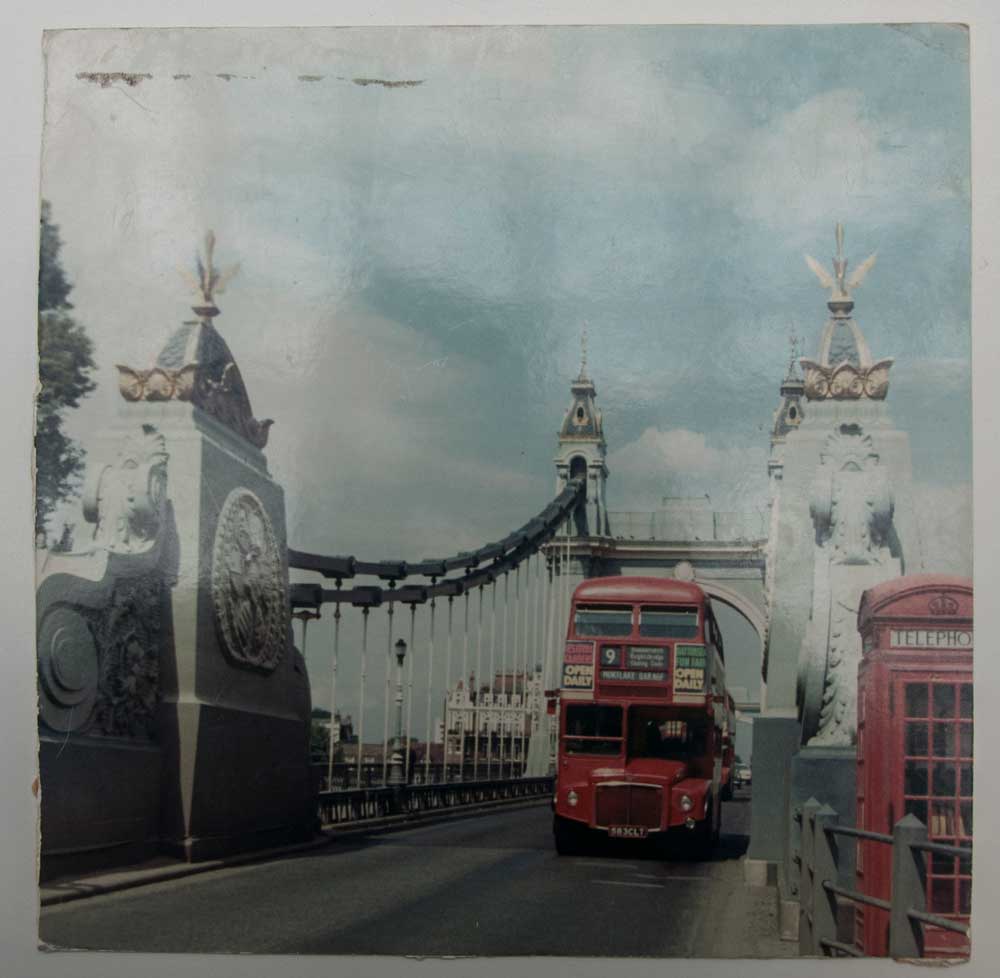
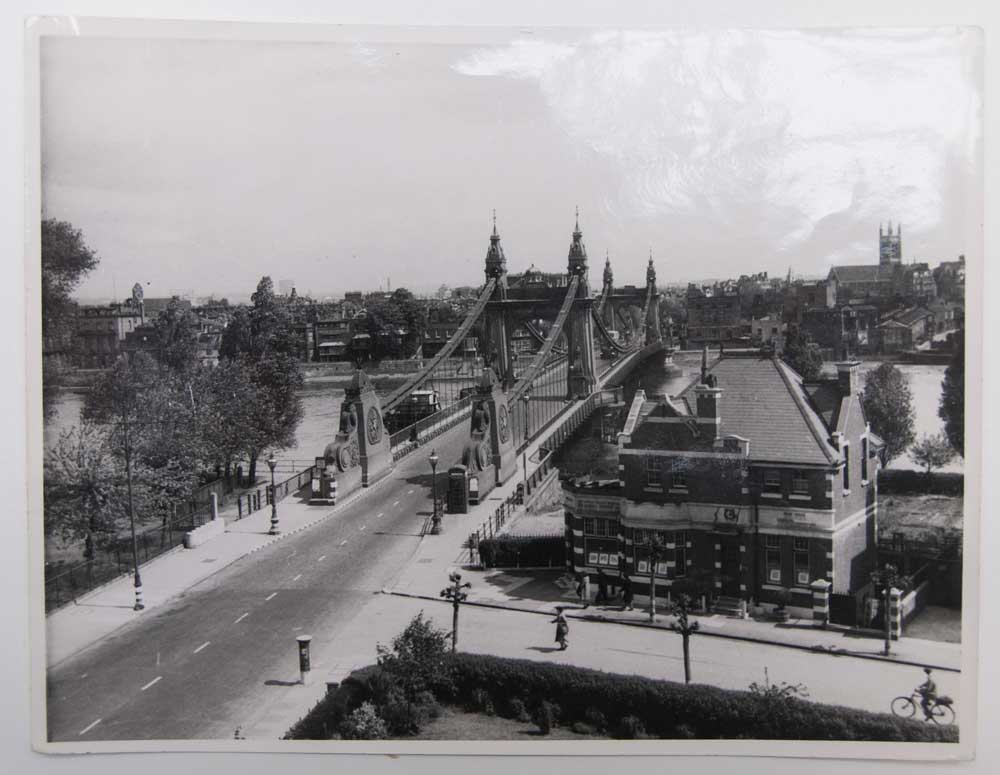
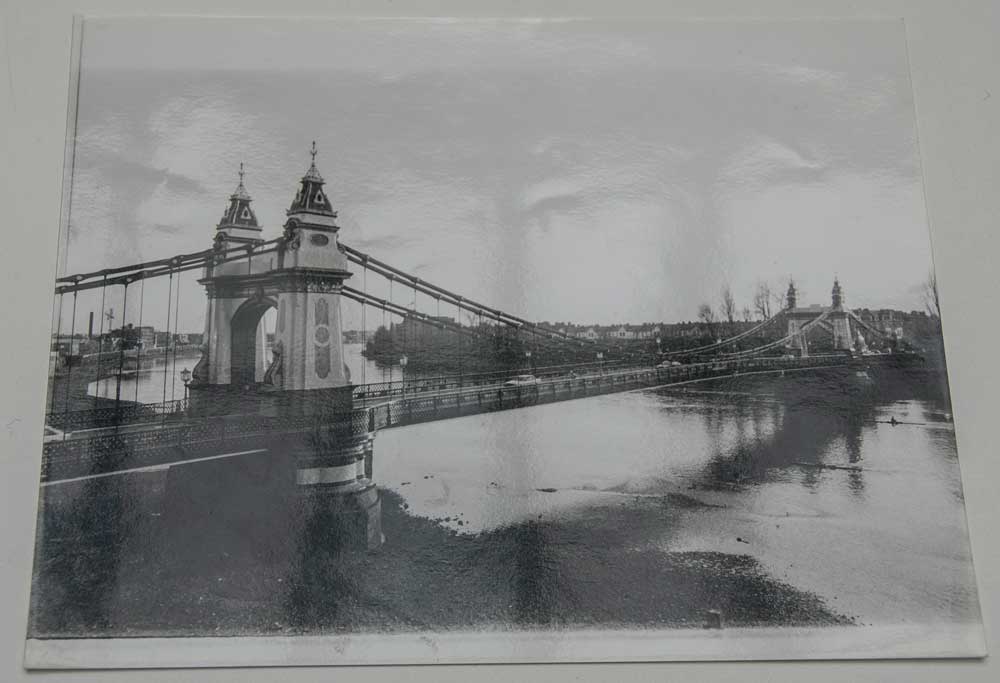
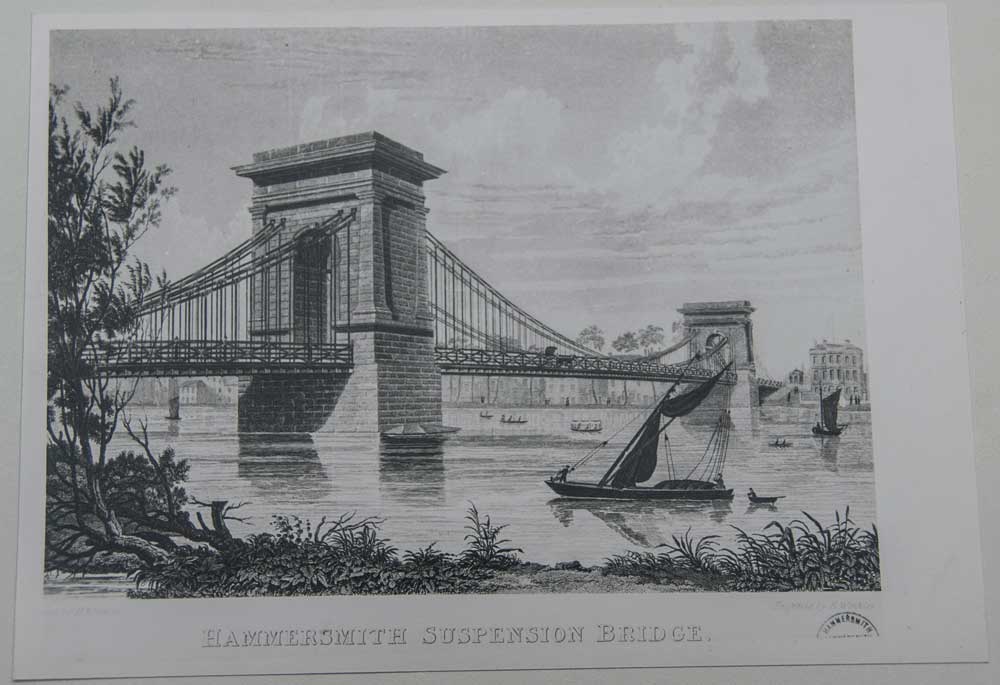
Illustrations reproduced courtesy of Hammersmith & Fulham Local Studies
Submit Local History Features
If you write local history features we want to hear from you. We will publish your features on our website with mentions in our email newsletters and on social media. You will be credited accordingly (ensure you have full copyright). If you are selling books you can include links to your contact details. Get in touch via email or the Contact form.
connect@keepthingslocal.com
